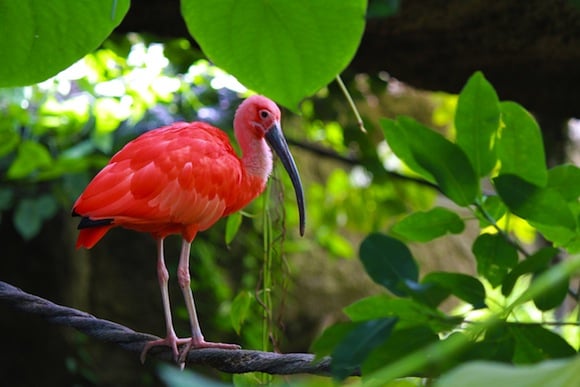10 Things You Didn’t Know About Colombia
While most people are aware Bogota is the capital of Colombia and that the country is home to beautiful people and world-class textiles, there are many things about this advancing nation still unknown. To help expand your knowledge of this South American country, here are 10 things you didn’t know about Colombia.





1. Colombia is home to 800,000 coffee farms.
The Departments of Caldas, Quindío and Risaralda are known as the Coffee Triangle, filled with coffee plantations, farmhouses and a rich java culture. This is a big part of Colombia tourism. Visitors can participate in a coffee tasting, awakening the senses to a deeper knowledge and appreciation of all the sensory characteristics that define a coffee of excellence.2. Colombia is home to a cathedral made of salt.
Opened in 1995, you can visit the Salt Cathedral of Zipaquira, dug into the inside of a salt mine. Located two hours from Bogota, you’ll find an expansive art collection, including salt and marble sculptures, in a strikingly religious space.3. Colombia has the tallest seaside mountain range in the world.
Standing at 18,930 feet above sea level, the Sierra Nevada de Santa Marta is the world’s highest seaside mountain range. The highest point is yet to be determined, although is thought to be either Pico Cristóbal Colón or Pico Simón Bolívar. Once home to 30,000 indigenous people, there are still inhabitants from the native American Tairona Cultures of Arhuacos, Koguis, Wiwas and Kankuamos in the Indian reserves. The park the mountain range resides in, Sierra Nevada de Santa Marta National Park is a Colombia’s second oldest national park and home to 440 bird species and 44 endemic animal species.4. Colombia is a top destination for whale watching.
Annually from July to November, Humpback whales flee the cold South Pole for the warmer waters of the Colombian Pacific. Visitors will watch as males jump out of the water trying to court the females, who give birth to baby calves. For your best bet at seeing the action, head to Bahia Solano in Colombia’s Chocó Department.5. The Gold Museum in Bogota has close to 34,000 gold pieces on display.
In addition to these pieces, the museum also boasts 20,000 bone, stone, ceramic, and textile articles belonging to 13 Pre-Hispanic societies. The main attraction, however, is the nearly 34,000 pieces of gold left by indigenous cultures.
Scarlet Ibis via alconebay
6. Colombia has the greatest avian diversity in the world, with over 1,876 species.
With over 1,876 species, Colombia attracts birdwatchers from all over the world, especially in the Coffee Triangle. Even in the 21st century, new species are continuing to be discovered, with some of the most recent being the Chestnut-capped Piha, Munchique Wood-Wren, Stiles’s and Upper Magdalena, Gorgeted Puffleg, Scarlet Ibis and the Antioquia Brush-Finch.
Sun shining over Iglesia del barrio La Candelaria in Bogotá, Colombia via jhonattan
7. Colombia has 365 days of sunlight each year.
While the country endures its fair-share of rain, the sun is always shining due to its proximity to the equator.
Pirate’s treasure via penywise
8. Colombia has buried treasure.
Apparently, Sir Henry Morgan spent much time traveling to and from Colombia and Jamaica. An inhabitant of Morgan’s Cave, he planned many attacks on gold-filled sailing ships on their way to Europe. Legend has it his treasure is buried in Morgan’s Cave, a coral rock cave located above 75 feet below sea level. With no way to enter without diving and the area being filled with sharks, those who attempt to get to it better hope it’s a fortune.
Volcan del Totumo via Marteshi
9. You can have a spa treatment in a volcano.
Located 30 miles outside of Cartagena, Volcán de Lodo El Totumo is a mud hill, or volcano offering a natural way to get healthy skin benefits. The mud is said to remove toxins from and heal skin with its sulfates, phosphates and magnesium properties.
Dancing In Palengue de San Basilio via ReservoirHill






Hi, I’m Jessie on a journey!
I'm a conscious solo traveler on a mission to take you beyond the guidebook to inspire you to live your best life through travel. Come join me!
Want to live your best life through travel?
Subscribe for FREE access to my library of fun blogging worksheets and learn how to get paid to travel more!
Turn Your Travel Blog Into A Profitable Business
Subscribe to my email list to snag instant access to my library of workbooks, checklists, tutorials and other resources to help you earn more money -- and have more fun -- blogging. Oh, and it's totally FREE! :) // Privacy Policy.